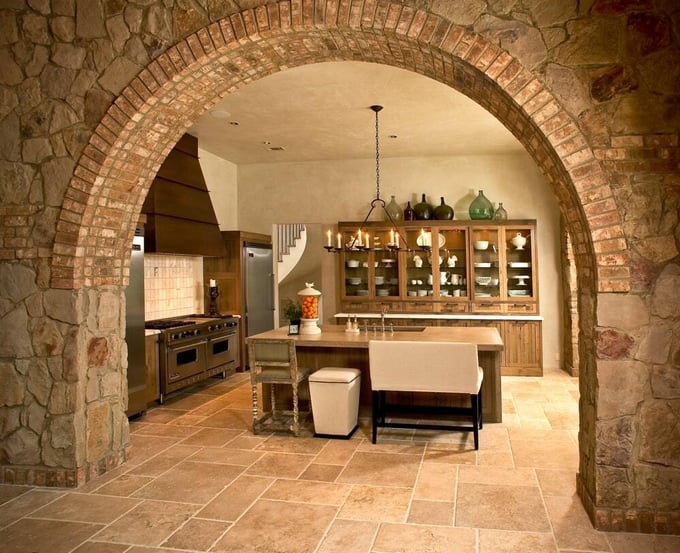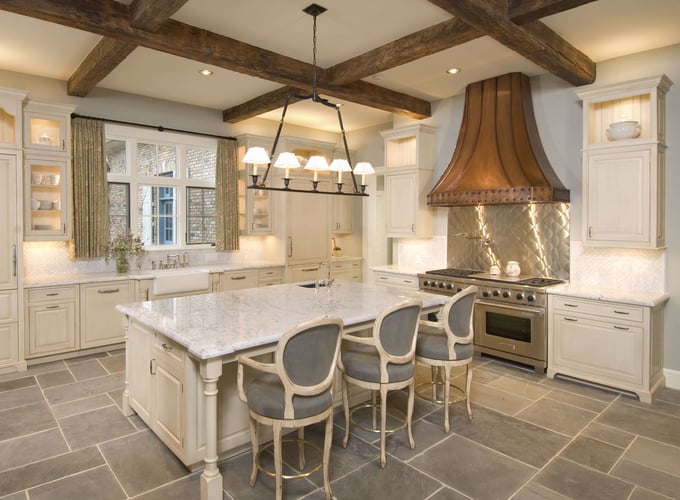
Designing and building a custom home is an exciting journey, but it requires a seamless partnership between your custom homebuilder and interior designer to bring your vision to life. As custom homebuilders, we’ve seen firsthand how a well-coordinated collaboration between these two professionals can enhance not only the beauty of a home but also its functionality and overall quality. In this article, we’ll share insights into why this relationship is crucial and how homeowners can foster a productive collaboration between their builder and interior designer from the initial design phase through construction.
The Importance of a Strong Builder-Designer Relationship
A successful partnership between your custom homebuilder and interior designer ensures that every detail of your home aligns with your and your family’s lifestyle, aesthetic preferences, and long-term needs. When these professionals work together effectively, they can:
- Ensure Cohesive Design and Execution: Early collaboration between your custom builder, interior designer, and architect prevents costly design modifications down the road.
- Optimize Functionality and Flow: The interior designer considers how each space will be used and experienced, while the builder ensures that those ideas translate into a well-executed, structurally sound, and efficient layout.
- Streamline the Construction Process: A well-synchronized team can prevent miscommunications, reduce delays, and keep your project on track.
- Manage Budget Effectively: When builders and designers align from the start, they can make design choices that meet both aesthetic and financial goals, avoiding expensive last-minute changes.

How to Foster a Collaborative Partnership
1. Start with a United Vision
One of the best ways to ensure a smooth collaboration is to involve both your homebuilder and interior designer (as well as your architect) from the very beginning. During the initial design phase, set up a meeting with your dream team (architect, interior designer, builder) to discuss your overall vision, budget, and expectations. This allows them to develop a shared understanding of your goals and create a unified approach from the outset. Having everyone on the same page fosters an environment of shared purpose, collaboration, and accountability. This will serve everyone well throughout your project.
2. Encourage Open and Frequent Communication
Clear and consistent communication is the foundation of a successful partnership. Homeowners should encourage their builder and designer to hold regular check-ins throughout the project. This keeps everyone aligned on design decisions, materials, finishes, and construction timelines. In-person meetings are ideal, but virtual meetings also work well. If your custom builder is the organized and proactive type (they should be!), then they will likely run point on the meetings, creating agendas and following up with meeting notes and action items.

3. Define Roles and Responsibilities
Understanding who is responsible for what will prevent misunderstandings during construction. Your builder will manage the technical, structural, and regulatory aspects of the project, while your interior designer will focus on aesthetics, finish selections, and procurement of furnishings, window treatments, and some fixtures.
It is especially helpful for the builder to know whether the architect or the interior designer will be providing interior elevations and cabinetry drawings. You will want to define this BEFORE entering into agreements with both the architect and interior designer. If you’re not sure who will be the best option to provide these drawings, consult with your custom builder and they can help evaluate the best course. A well-defined scope of work ensures that all professionals respect each other’s expertise while working toward a common goal.
4. Prioritize Functionality Alongside Aesthetics
A beautifully designed home must also be practical. Your interior designer may have ideas for custom cabinetry, lighting, or unique materials, but it’s essential to ensure that these elements are feasible within the home’s structure and construction budget. Some design decisions are needed early on in the design phase in order to work details into the architectural drawings that reflect the proper construction of those details.
For example, if homeowners want mechanized shades in their main living room but don’t want the unsightly shade boxes to be visible in their finished space, then the builder and architect will need to incorporate a shade pocket into the ceiling. This can only be done well when considered during the design phase BEFORE construction begins.
Your builder will also be able to provide guidance on what materials NOT to use in your home. For example, in our humid Houston climate, vinyl wallpaper is not a good material to incorporate into your home, especially in bathrooms and kitchens, due to its unbreathable nature and propensity to allow mildew and mold to grow. Overall, your custom builder and interior designer should work together to balance creativity with practicality, ensuring your home is not only visually stunning but also built to last.

5. Select Materials and Finishes Early
Material selections can significantly impact both the budget and construction schedule for your custom home. By finalizing key choices—such as flooring, cabinetry, countertops, and lighting—early in the process, your builder can plan accordingly, and your designer can ensure all elements align with your vision. This prevents delays due to backorders, unexpected material costs, clarifications needed on the architectural plans, and much more.
Sometimes, there are particular design features that your interior designer may want to incorporate that call for a specific type of construction application in order to execute them properly. These will be needed very early, oftentimes before construction begins. For example, interior designers often like to incorporate wall paneling or heavy wood trim detailing in key spaces of a custom home. If this trim work is located along an interior wall that backs up to an exterior wall, then your custom builder will need to install the wood away from the wall, allowing for an air gap to prevent any moisture from becoming trapped. The finished trim work looks seamless and perfectly executed, AND you have peace of mind that you won’t be dealing with mildew or mold down the line. Ideally, this detail should be incorporated into the interior architectural drawings during the design phase.
here are a handful of other design selections that should ideally be made during the architectural design phase, well before construction begins. For example, exterior material selections are usually needed early in order to properly incorporate construction details into the architectural plans, get accurate structural engineering drawings, and obtain approval from your HOA and/or municipality to begin construction. The most critical of these exterior selections include your roof material, your exterior façade materials (stucco/stone/brick/siding/etc.), and the types of windows and doors you’ll be using for your home. Feel free to download our Design Selections Schedule to see what other decisions are needed before beginning construction.
6. Trust Your Dream Team
The most impactful decision you will make during your entire custom home building journey is who to choose as your Dream Team: your architect, your interior designer, and your custom builder. If you ensure that you’ve chosen well-qualified, trustworthy, and collaborative professionals, then you will be able to release the reins, trust their guidance, and enjoy a smooth and pain-free process. They have decades of expertise in crafting beautiful, functional homes and will work hard together to make sure your experience is enjoyable and your finished home is exactly as you envisioned.

Building a custom home is one of the most rewarding experiences you can undertake in your life, and fostering a strong collaboration between your custom homebuilder and your interior designer is key to ensuring a smooth process and an exceptional result. By aligning early, maintaining open communication, making timely decisions, and respecting each professional’s expertise, you can create a home that is not only beautiful but also perfectly tailored to your vision.




COMMENT ON THIS ARTICLE